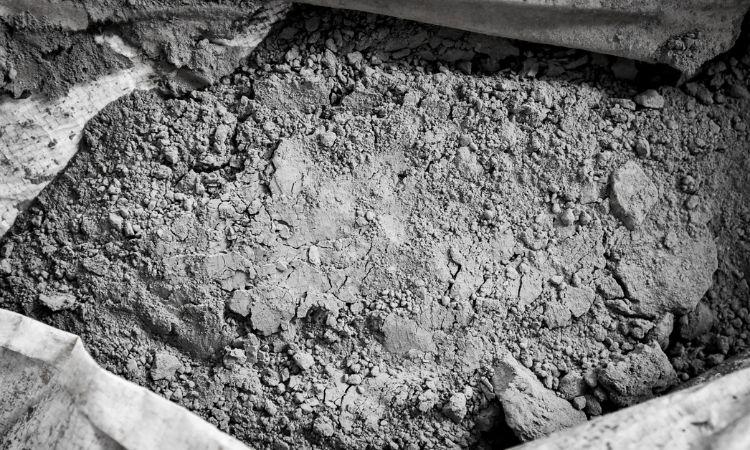The Europe cement market size stood at a volume of around 176.58 million metric tons (MMT) in 2021. The market is further expected to witness a Compound Annual Growth Rate (CAGR) of 1.9% in the forecast period of 2024-2032. These statistics underscore the significance of the cement industry in Europe, which plays a pivotal role in the construction sector and the broader economy. However, as the world grapples with environmental challenges and the urgent need for sustainable practices, the European cement market is undergoing a transformation.
In this blog post, we will explore the profound impact of sustainable construction practices on the European cement market. We’ll delve into the challenges faced by the cement industry, the innovative sustainable practices being adopted, their influence on market dynamics, and what the future holds for this vital sector.
I. Sustainability Challenges in the Cement Industry
A. Environmental concerns related to cement production
The cement industry is known for its substantial environmental footprint, primarily due to carbon emissions. Cement production is a carbon-intensive process, contributing significantly to greenhouse gas emissions. In Europe, where environmental consciousness is high, addressing this issue is paramount.
1. Carbon emissions
The production of traditional Portland cement involves the release of carbon dioxide (CO2) during the clinker production process. Clinker is a key component of cement and is produced by heating limestone and other materials to high temperatures in a kiln. This process not only releases CO2 but also consumes substantial amounts of energy.
Sustainable practices in cement manufacturing aim to reduce these emissions by adopting alternative materials and technologies. One such approach is the use of supplementary cementitious materials (SCMs), such as fly ash and slag, which can partially replace clinker in cement production. This reduces the carbon footprint of each ton of cement produced.
2. Resource depletion
Apart from carbon emissions, traditional cement production also involves the consumption of finite natural resources. The mining of limestone and other raw materials can lead to habitat destruction and resource depletion.
Sustainable practices promote the responsible sourcing of raw materials and the use of alternative binders, reducing the environmental impact associated with resource extraction.
B. Regulatory and societal pressures for sustainability
In recent years, there has been a growing awareness of environmental issues and a shift towards more sustainable construction practices. This has been accompanied by stringent environmental regulations and increased public scrutiny.
1. EU environmental regulations
The European Union (EU) has been at the forefront of environmental regulations. The EU Emissions Trading System (EU ETS) places a cap on carbon emissions from various industries, including cement production. Companies exceeding their allocated emissions are required to purchase carbon allowances, which can be costly. This incentivizes cement manufacturers to reduce their carbon footprint.
2. Increasing demand for eco-friendly construction materials
Consumers, architects, and builders are increasingly seeking eco-friendly construction materials. Green building certifications, such as LEED (Leadership in Energy and Environmental Design), promote the use of sustainable materials, including cement. This demand drives innovation in the industry.
II. Sustainable Practices in European Cement Production
To address these sustainability challenges, European cement producers have been actively adopting innovative practices.
A. Alternative and lower-carbon cement formulations
1. Use of supplementary cementitious materials (SCMs)
Supplementary cementitious materials, such as fly ash, slag, and natural pozzolans, have become integral to cement production. These materials are used as partial replacements for clinker, reducing the overall carbon intensity of cement. For example, Portland limestone cement (PLC) contains a higher percentage of limestone, which requires lower energy to produce and emits less CO2.
2. Energy-efficient manufacturing processes
Energy efficiency is a key focus area for sustainable cement production. European cement plants have been adopting advanced technologies to reduce energy consumption during clinker production.
a. Adoption of alternative fuels
Many cement plants have transitioned to using alternative fuels, such as biomass, waste-derived fuels, and even non-recyclable plastics. These fuels not only reduce the carbon footprint but also provide a sustainable solution for waste management.
b. Improvements in kiln technology
Kilns are at the heart of cement production, and advancements in kiln design have played a crucial role in reducing energy consumption. High-efficiency kilns with better heat recovery systems are now in use, further decreasing the environmental impact.
B. Waste reduction and recycling in cement plants
1. Reuse of byproducts like slag and fly ash
Cement production generates various byproducts, such as slag from steel production and fly ash from coal combustion. Sustainable practices involve incorporating these byproducts into cement formulations, reducing waste and conserving natural resources.
2. Closed-loop systems
Some cement plants have implemented closed-loop systems where waste materials generated during production are recycled within the plant. This approach minimizes waste disposal and lowers environmental impact.
III. Impact on Market Dynamics
The adoption of sustainable practices in the European cement industry has significant repercussions on market dynamics.
A. Increasing demand for sustainable cement products
1. Growth in green building certifications (e.g., LEED)
As sustainability becomes a central focus in construction, green building certifications like LEED have gained prominence. These certifications incentivize the use of sustainable materials, including low-carbon cement products. Consequently, there is a rising demand for cement that meets these criteria.
2. Consumer preferences for eco-friendly construction
Consumers are increasingly conscious of their environmental footprint. They are more likely to choose eco-friendly construction materials, putting pressure on builders to use sustainable cement products. This consumer-driven demand further motivates cement manufacturers to invest in sustainability.
B. Market competitiveness and differentiation
1. Sustainability as a competitive advantage
Cement companies that proactively adopt sustainable practices can gain a competitive edge. They can market their products as environmentally friendly and position themselves as leaders in sustainable construction solutions.
2. Market share of sustainable cement producers
As sustainability becomes a central criterion in construction material selection, cement manufacturers that fail to embrace sustainable practices may lose market share. Sustainable cement producers are better positioned to capture a growing segment of environmentally conscious customers.
V. Challenges and Future Outlook
A. Remaining challenges in achieving sustainability goals
1. Cost considerations
While sustainable practices offer long-term benefits, they may entail higher upfront costs for technology upgrades and alternative materials. Cement manufacturers must carefully balance these investments with the potential cost savings and market advantages in the long run.
2. Technological limitations
Some sustainable technologies, such as carbon capture and utilization (CCU), are still in the experimental stage and face technical challenges. Cement companies need to closely monitor advancements in these areas and be prepared to adapt.
B. Future trends and innovations in sustainable cement production
1. Carbon capture and utilization (CCU) technologies
CCU technologies hold great promise for reducing carbon emissions in cement production. These innovations capture CO2 emissions from cement plants and convert them into useful products, such as building materials or fuels. As CCU matures, it could revolutionize the industry’s environmental impact.
2. Circular economy approaches
The cement industry is exploring circular economy principles, which involve recycling and reusing materials throughout the cement production process. By minimizing waste and resource consumption, this approach aligns with sustainability goals.


